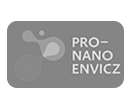Research interests of Department of Nanocatalysis
The Department of Nanocatalysis, established in January 2019, focuses on rational design of model heterogeneous catalysts and electrocatalysts with stress on the control of the chemical composition and structure on subnanometer level. The nanocatalysts are fabricated using
- physical size-selected metal cluster deposition technique in vacuum to fabricate subnanometer to few nm large clusters
- wet chemistry to synthesize nanometer size particles
In size-selected cluster deposition, first a beam of atomic clusters of various sizes and composition is created in vacuum, followed by mass selection of clusters with single atomic size and composition of interest, and the subsequent deposition of clusters on model and technologically relevant support materials.
Through wet chemical routes nanosized heterogeneous catalysts are synthesized from precursors; electrocatalysts are prepared using selective solution-based treatments of non-metal precursors. In the case of the latter, selective post synthesis treatments, e.g. controlled exfoliation, are applied on metastable nano-sized chalcogenides to maximize the desired surface orientation to boost electrocatalytic activity and selectivity.
The prepared nanocatalysts are ultimately tested under working ("operando") conditions to establish relationships between the size, composition, local structure and nature of the substrate of the nanocatalysts and their activity and selectivity in challenging catalytic and electrocatalytic processes like transformations of hydrocarbons, conversion of CO2 or water electrolysis.


















